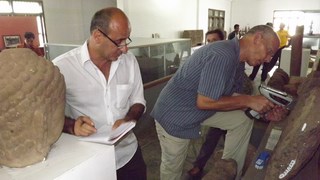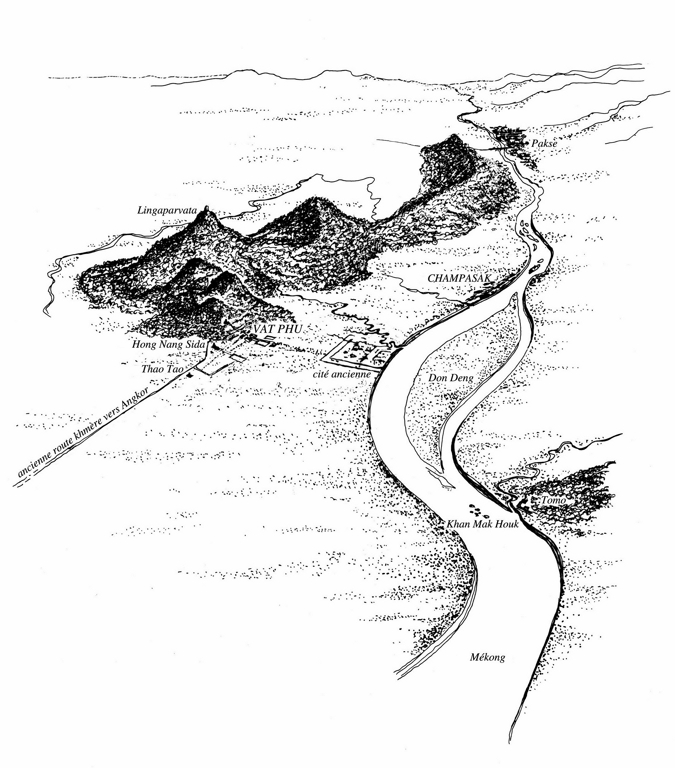Non-invasive analysis of archaeological materials
During this mission to Vat Phou, Laos, we used two instruments, a handheld X-ray fluorescence spectrometer (fig. 1) and a portable UV-Vis-NIR reflectance spectrometer (fig. 2), to analyze sculptures and other artifacts non-invasively, and to collect data about stone composition, weathering layers and surface patinas. Both techniques are non-invasive, meaning that no sampling is necessary, and are obviously non-damaging to the stone artifacts. XRF gives information about the elemental composition of the material and UV- Vis-NIR spectroscopy can identify various constitutive minerals such as clays, carbonates and iron oxides as well as coatings and pigments based on their reflectance in the 350-2500 nm spectral range.
 |
 |
The mission aims to determine the carved rocks (sandstone) discovered on the site of Vat Phu and its surroundings by examining the artifacts of the museums and the storeroom and site investigations (for outcrops and carrieres).
All this data help us identify the nature and origins of the carved sandstone in various periods.
They are also important for understanding the alterations and conservation works. They can also be valuable for solving issues of identification or authentication.
During the mission, discussions with the concerned staff of SAGV helped introduce methods of analysis. The lecture by Professor Christian Fischer, focused on the origin of sandstone and analyzing their composition, was an excellent wrap-up of the mission. Highlights of the presentation were types of sandstones found in Southeast Asia and the famous "terrain rouge", which is the name commonly given to the sandstone formation in this part of the world (early Jurassic -200 Ma ) – such Terrain Rouge sandstone can be found in Champassak.
The participation of Bertrand Porte (EFEO), Head of restoration Phnom Penh program, and Christine Hawixbrock (EFEO Vientiane) during the analysis mission will facilitate future collaborative missions, in preparation of the future program of conservation and restoration of sculpture by conservators of the National Museum of Cambodia, in collaboration with the EFEO.
 |
 |
 |
 |
 |
 |
 |
 |
 |








